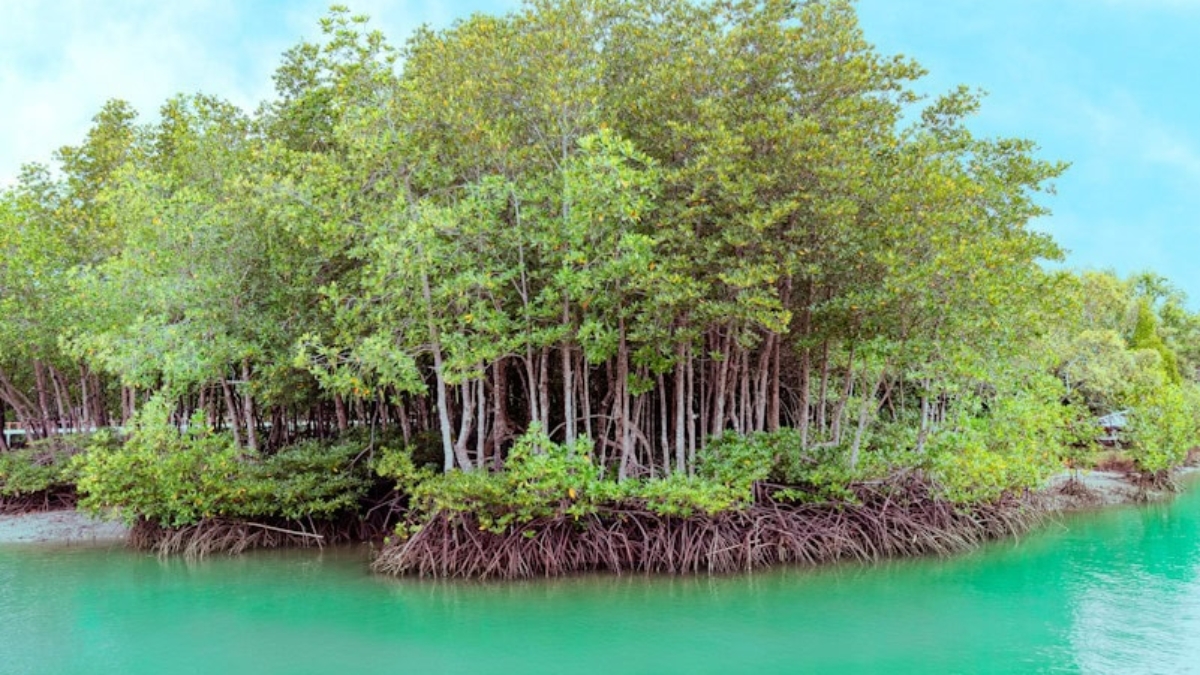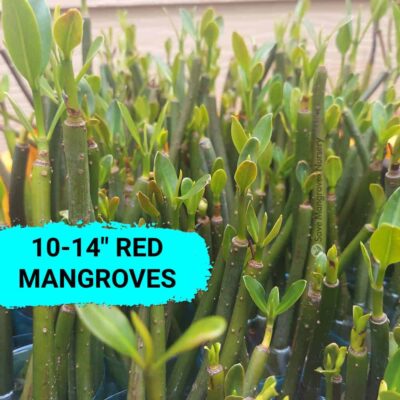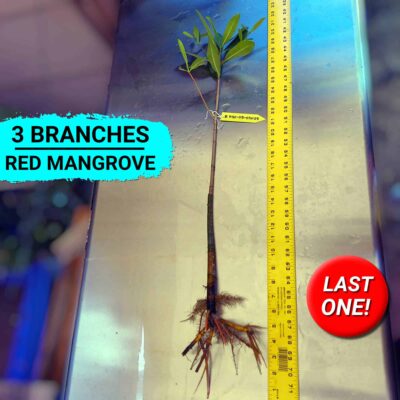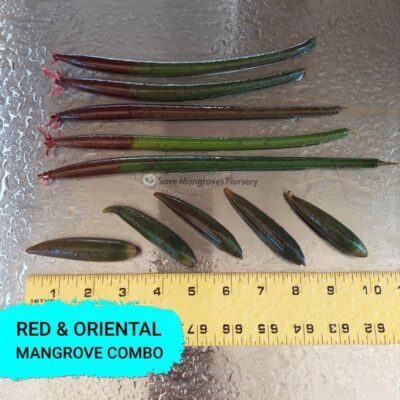When you first notice that the leaves on your mangroves are turning yellow, it can be concerning. As a professional aquarium enthusiast and a grower at Save Mangroves Nursery, I’ve encountered this issue many times. Mangroves are resilient, but they still require proper care to thrive, especially in an aquarium environment. Let’s dive into the reasons why this might be happening and what you can do about it.
Understanding Mangrove Leaf Yellowing
Yellowing leaves on mangroves can be an early sign of stress. While it’s natural for some leaves to yellow and drop as part of the plant’s life cycle, consistent yellowing could indicate that something is wrong.
Common Causes of Yellowing Leaves
1. Nutrient Deficiency
Mangroves are unique in their nutrient needs, particularly when grown in aquariums. They require a variety of minerals and trace elements to maintain their vibrant green leaves. If your mangroves aren’t getting enough nutrients, yellowing may be one of the first signs.
- ✅ Good: Regularly adding a quality liquid fertilizer or root tabs designed for mangroves can help.
- ❌ Bad: Ignoring nutrient deficiencies can lead to further deterioration, with leaves turning from yellow to brown and eventually falling off.
2. Salinity Issues
Mangroves are typically found in coastal areas where they are exposed to saltwater. However, when grown in aquariums, they need the right balance of salinity to thrive. Too much or too little salt can cause stress, leading to yellow leaves.
- ✅ Good: Regularly testing and adjusting the salinity of your aquarium water to ensure it’s within the recommended range for mangroves.
- ❌ Bad: Failing to monitor salinity levels can result in an unhealthy environment, making it difficult for your mangroves to absorb essential nutrients.
3. Overwatering or Poor Drainage
While mangroves are often associated with water, they don’t like to have their roots constantly submerged, especially in freshwater tanks. Overwatering or poor drainage can suffocate the roots, leading to yellowing leaves.
- ✅ Good: Ensure your mangroves are planted in a way that allows their roots to breathe, using substrates that provide good drainage.
- ❌ Bad: Constantly waterlogged roots can lead to root rot, further exacerbating the yellowing of leaves.
Fun Fact: Mangroves as Natural Filters 🌱
Did you know that mangroves are excellent natural filters for aquariums? They help absorb excess nutrients, reducing the risk of algae blooms and keeping your tank water clear and healthy. This is one of the many reasons why adding mangroves to your aquarium can be so beneficial!
Environmental Factors That Affect Mangrove Health
Environmental factors play a significant role in the health of your mangroves. Let’s explore some of the key aspects that could be affecting your plants.
1. Lighting
Mangroves need proper lighting to perform photosynthesis and grow. Insufficient light can lead to weak, yellow leaves, as the plant struggles to produce enough energy.
- ✅ Good: Provide full-spectrum lighting that mimics natural sunlight for about 8-10 hours a day.
- ❌ Bad: Using inadequate lighting can stunt growth and lead to yellowing leaves.
2. pH Levels
The pH level of your aquarium water is another critical factor. Mangroves prefer slightly alkaline water, with a pH range of 7.5 to 8.5. If the pH is too low or too high, it can stress the plant and cause the leaves to turn yellow.
- ✅ Good: Regularly test the pH levels of your tank and adjust as needed to maintain the ideal range for mangroves.
- ❌ Bad: Neglecting pH levels can lead to a hostile environment, causing further yellowing and potential leaf drop.
3. Temperature Fluctuations
Mangroves are adapted to warm tropical climates, so maintaining a stable water temperature in your aquarium is crucial. Temperature fluctuations can cause stress, leading to yellowing leaves.
- ✅ Good: Keep your aquarium temperature consistent, ideally between 75°F and 85°F.
- ❌ Bad: Allowing temperature to fluctuate too much can shock the plant, resulting in yellow leaves.
Mangrove Facts: The Resilience of Mangroves 🌍
Mangroves are incredibly resilient plants. They can survive in harsh coastal environments, tolerate salty water, and even thrive in nutrient-poor soils. This resilience makes them an excellent choice for aquariums, where they can contribute to a balanced ecosystem.
Addressing Yellowing Leaves: What To Do
Now that we’ve covered the possible causes, let’s talk about what you can do if your mangrove leaves are turning yellow.
1. Adjusting Nutrient Levels
If you suspect a nutrient deficiency, start by adding a balanced aquarium fertilizer. Look for products specifically designed for mangroves or aquarium plants to ensure they contain the necessary trace elements.
- ✅ Good: A balanced diet of nutrients can quickly reverse yellowing and promote healthy, green growth.
- ❌ Bad: Ignoring the problem can lead to further deterioration, with leaves continuing to yellow and drop.
2. Correcting Salinity
Use a reliable aquarium hydrometer to check the salinity of your tank. If it’s too high or too low, make gradual adjustments by adding freshwater or saltwater as needed. Be careful not to make changes too quickly, as sudden shifts can shock your plants.
- ✅ Good: Maintaining the correct salinity level will help your mangroves absorb nutrients more effectively, reducing the likelihood of yellow leaves.
- ❌ Bad: Neglecting salinity issues can lead to chronic stress and eventual plant death.
3. Improving Drainage and Watering Practices
Check the substrate in your tank to ensure it provides adequate drainage. If your mangroves are planted in pots, consider adding a layer of gravel at the bottom to improve water flow. Be mindful of your watering habits, ensuring the roots are not constantly submerged.
- ✅ Good: Proper drainage and watering practices will keep your mangroves’ roots healthy, reducing the risk of yellowing leaves.
- ❌ Bad: Overwatering can lead to root rot, which is much harder to recover from.
Fun Fact: Mangroves and Carbon Sequestration 💡
Mangroves are not just great for your aquarium; they’re also environmental superheroes! They play a significant role in carbon sequestration, helping to combat climate change by absorbing and storing carbon dioxide. So, by adding mangroves to your aquarium, you’re also contributing to a healthier planet.
Preventing Future Issues
Prevention is always better than cure. Here are some tips to help you avoid yellowing leaves in the future.
1. Regular Maintenance
Routine checks of water parameters, including salinity, pH, and temperature, will help you catch potential problems before they affect your mangroves. Consistent maintenance also includes regular pruning of any dead or yellowing leaves to encourage new growth.
2. Observation and Early Intervention
Keep a close eye on your mangroves. If you notice any changes in leaf color or plant health, address them immediately. Early intervention is key to keeping your plants healthy and thriving.
- ✅ Good: Regular observation and early intervention can prevent small issues from becoming big problems.
- ❌ Bad: Ignoring early signs of stress can lead to more severe issues down the line.
Conclusion: Nurturing Healthy Mangroves
Yellowing leaves can be a sign of underlying issues, but with the right care, your mangroves can thrive. By addressing nutrient deficiencies, salinity imbalances, and environmental factors, you can restore your plants to their vibrant green state.
At Save Mangroves Nursery, we specialize in providing healthy Live Red Mangrove Plants that are ready to add to and naturally filter your Saltwater, Freshwater, or Brackish Aquarium tanks. We ship out to all 50 states daily, ensuring you have access to the best plants for your aquarium.
Remember, mangroves are resilient, but they still need the right care to thrive. With proper attention, you’ll enjoy the many benefits these incredible plants have to offer in your aquarium.
Best seller products
-
18”-24” Red Mangroves With Roots & 2-4 Leaves
Price range: $34.99 through $87.99 -
10”-14” Red Mangroves With Roots & 2-4 Leaves
Price range: $19.99 through $47.99 -
28″ Red Mangrove Tree – Fully Mature Plant
Price range: $0.00 through $230.00 -
[RARE] Orange Oriental Mangroves Propagule Seeds
Price range: $19.99 through $79.99 -
30″ Red Mangrove Tree – Fully Mature Plant
Price range: $0.00 through $180.00 -
Red & Oriental Mangrove Combo Bundle
Price range: $29.99 through $44.99
 Cart is empty
Cart is empty 




![[RARE] Orange Oriental Mangroves Propagule Seeds](https://savemangroves.com/wp-content/uploads/2025/07/Oriental-Mangrove-Seeds-Save-Mangroves-Nursery-400x400.jpg)



Add a Comment
You must be logged in to post a comment